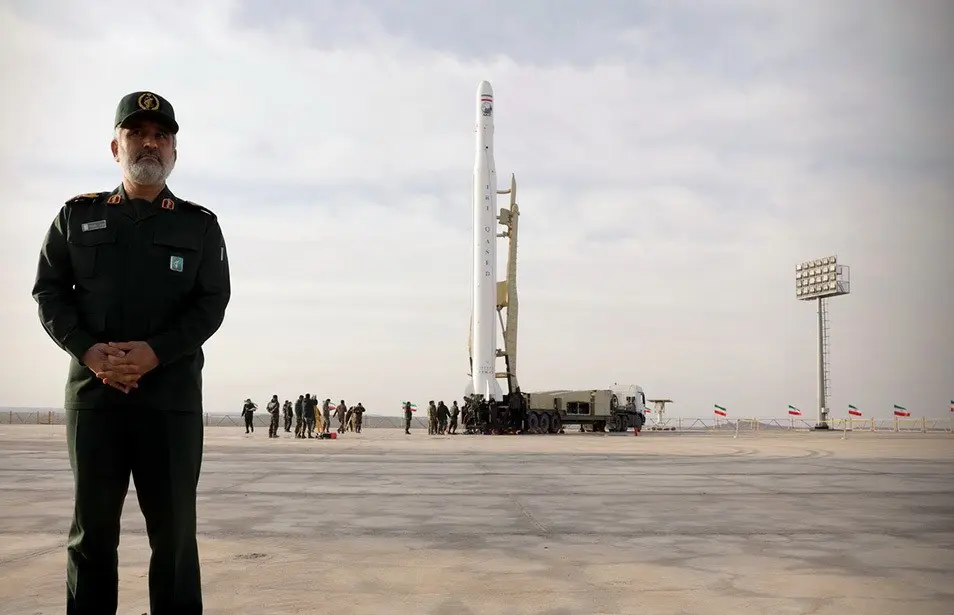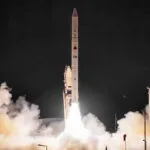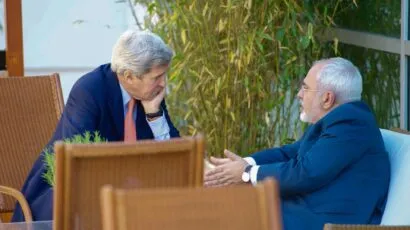Iran’s space launches are not a cover for missile work. Until they are.
By John Krzyzaniak | April 23, 2020
 Amir Ali Hajizadeh, commander of Aerospace Force of Iran’s Islamic Revolutionary Guard Corps, stands in front of the Qased before launch. Photo credit: Tasnim news.
Amir Ali Hajizadeh, commander of Aerospace Force of Iran’s Islamic Revolutionary Guard Corps, stands in front of the Qased before launch. Photo credit: Tasnim news.
Iran’s Islamic Revolutionary Guard Corps conducted a surprise launch on Wednesday in which it claims to have successfully placed a military satellite in orbit. As with Iran’s previous space launches, the US Secretary of State Mike Pompeo characterized the event as a “missile launch,” maintaining that these serve as a cover for ballistic missile development. But Wednesday’s launch is distinctive from earlier space launches in several significant ways—ways that will actually strengthen the US argument as it brings its case to the UN Security Council.
Iran made its first attempt at putting a small satellite into orbit in 2008, and its first successful attempt in 2009. Since then, it has conducted a handful of space launches with mixed success. The most recent such attempts, in August 2019 and in February 2020, have ended in failure. After the August 2019 attempt, which ended before the rocket ever left the launch pad, President Trump tweeted:
The United States of America was not involved in the catastrophic accident during final launch preparations for the Safir SLV Launch at Semnan Launch Site One in Iran. I wish Iran best wishes and good luck in determining what happened at Site One. pic.twitter.com/z0iDj2L0Y3
— Donald J. Trump (@realDonaldTrump) August 30, 2019
All of these launches were carried out by the Iranian Space Agency, a civilian agency that is part of the Ministry of Communications and Information Technology. And they all involved liquid-fueled rockets that were based on older North Korean technology.
In those instances, when the Trump administration asserted that the launches were advancing Iran’s ballistic missile development, experts pushed back, noting many differences between the two. For example, Michael Elleman, the Director of the Non-Proliferation and Nuclear Policy Programme at the International Institute for Strategic Studies, pointed out in January 2019 that ballistic missiles must be designed to be able to re-enter the atmosphere—a substantial engineering challenge—whereas space launch vehicles do not.
More important, Iran’s liquid-fueled Simorgh rocket and its predecessor the Safir—rockets that the Space Agency has continually relied upon—have some serious downsides if they were to be repurposed as a missile. As Jeffrey Lewis, an arms control expert at the Middlebury Institute of International Studies at Monterey, told Quartz in 2019, it takes several days or even weeks to prepare them for a launch. The rocket has to be trucked to the site and erected with a crane. Once there, it has to sit on the launch pad while fuel is loaded and systems are checked. All the while, it would make an easy target for a pre-launch attack. To have real military utility, such a rocket would need to be light, mobile, and quick to launch. Because even a reconfigured Simorgh will never be any of those, independent experts have concluded that Iran’s liquid-fueled space launch vehicles do not represent a credible path to an ICBM.
Wednesday’s launch, however, was different from earlier ones in significant ways. First, it was not the civilian Iranian Space Agency, but the Revolutionary Guard Corps that conducted it. It’s an entirely separate development track—one that was thought to be dormant since 2011, but that has actually quietly continued.
Second, the launch did not involve the Simorgh. Instead, it used the Qased, a new hybrid-propellant system that combines liquid- and solid-fueled stages. Fabian Hinz, a research associate who is also at the Middlebury Institute for International Studies at Monterey, observed on Twitter that “the Qased looks a lot like a Safir-based first stage with a Salman on top of it.”
The Qased looks a lot like a Safir-based first stage with a Salman on top of it. https://t.co/5xmVOPCo8g
— Fabian Hinz (@fab_hinz) April 22, 2020
The Salman is a solid-fueled motor that Iran first showed off in February 2020 and that, according to Hinz, is lighter than Iran’s earlier motors and, critically, has a better mechanism for thrust control. At the time, Hossein Salami, the commander of the Revolutionary Guard Corps, boasted that the new technology would make Iranian missiles “cheaper, lighter, faster, and more precise.”
Third, the Revolutionary Guard Corps used a mobile launcher and a new launch site. Although the transporter-erector-launcher appeared to be the same model as one that has been used for the liquid-fueled Safir, Wednesday’s launch proved the Qased could be set up and launched much more quickly than the latter system.
Although Iran’s solid-fueled program represents a more credible path to an eventual ICBM capability, it is still in early stages of development, according to David Wright, a missile expert at the Union of Concerned Scientists. In an email to the Bulletin, he explained, “What is very difficult is making large-diameter solid rocket motors. This launcher appears to have been a large liquid first stage with a small solid upper stage.” The Qased, in other words, may be able to bring a small satellite into orbit, but it still is nowhere near powerful enough to carry a warhead over a long distance.
In an email to the Bulletin, Elleman agreed, saying that the Qased is actually much less capable than the Simorgh in terms of its potential range. He added that, although Iran built and tested a fairly large-diameter solid-fueled missile, the Sejil, as far back as 2008, progressing to an even larger-diameter solid-fueled motor would be “a quantum leap” in terms of difficulty. He concluded that the Qased’s “operation will not decisively contribute to the development of an ICBM.”
However, in an interview, Hinz gave the launch more significance. He said it was a successful demonstration of the flexible nozzle for thrust control, a component that may have held back Iran’s solid fuel program in years prior. He also noted that Iran may already be testing larger solid-fueled motors from the ground.
Together, we make the world safer.
The Bulletin elevates expert voices above the noise. But as an independent nonprofit organization, our operations depend on the support of readers like you. Help us continue to deliver quality journalism that holds leaders accountable. Your support of our work at any level is important. In return, we promise our coverage will be understandable, influential, vigilant, solution-oriented, and fair-minded. Together we can make a difference.
Keywords: Iran, Iranian Revolutionary Guard Corps, ballistic missile, ballistic missiles, missiles, space launch vehicle
Topics: Nuclear Risk















